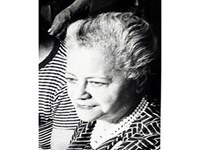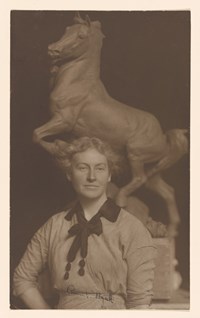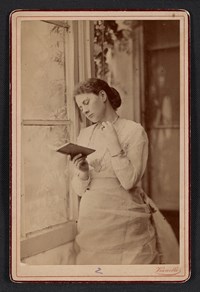- Boston National Historical Park (66)
- Boston African American National Historic Site (59)
- Acadia National Park (50)
- Homestead National Historical Park (40)
- Fort Sumter and Fort Moultrie National Historical Park (39)
- Independence National Historical Park (39)
- Golden Gate National Recreation Area (34)
- Belmont-Paul Women's Equality National Monument (28)
- Cedar Creek & Belle Grove National Historical Park (24)
- Show More ...
Showing 1,091 results for Portrait ...
- Type: Person
Moses Cone
Marguerite Thompson Zorach
Port Royal State Historic Park
- Type: Place
“...the people…are moving not from choice to an unknown region not desired by them.” Elijah Hicks wrote these words to Chief John Ross while camped at Port Royal, Tennessee in October 1838. Port Royal was the last place over 10,000 Cherokees slept in Tennessee before crossing into Kentucky. They were travelling along the Great Western Road, part of the Northern Route, which ran from Nashville, Tennessee to Missouri. Visitors can walk about a 1/4 mile of that historic roadbed.
Anna Arnold Hedgeman (1899-1990)
- Type: Person
Before Shirley Graham married W.E.B. Du Bois in 1951, she had earned a national reputation as a playwright, composer, conductor, director, and author. Born to a A.M.E. minister and a European mother, Graham was raised to appreciate Black culture and music. From a young age, her parents instilled in her the importance of social justice and the uplift of the Black Community. For her lifelong dedication, we honor her as an ancestor.
Maria Oakey Dewing
Stanley Abbott
- Type: Person
Labor Reforms of the Port Royal Experiment
- Type: Article
Paying wages to the formerly enslaved people served two purposes for the government officials developing the Port Royal Experiment. It helped to provide a solution of where people should live. Wages also began to put cash into the hands of people who had toiled this land for generations. Many sought to use that cash to secure that land for themselves.
The Port Royal Experiment
Series: The Port Royal Experiment
- Type: Article
In the fall of 1861 after the Battle of Port Royal, the US military came ashore around Beaufort and found thousands of now formerly enslaved people in control of the region. The military had no real plan yet for what to do with these people or even their legal status. Newly freed Black South Carolinians were active participants. They demanded access to programs to support labor reforms, land redistribution, quality education, and military service.
The Legacy of the Port Royal Experiment
Military Service and the Port Royal Experiment
William Moultrie
- Type: Person
William Moultrie's 2nd South Carolina Regiment successfully defended Charleston Harbor from the Royal Navy in the Battle of Sullivan's Island on June 28, 1776. This Patriot victory marked the beginning of a meteoric rise for Moultrie as he achieved the rank of general and later served South Carolina as governor.
- Type: Person
Banastre Tarleton, a British army officer, famously commanded the British Legion, a provincial regiment composed of loyalist infantry and dragoons, in the southern theater under Lord Cornwallis during the Revolution. Feared for his ruthlessness by the patriots, his early successes in the field earned him notoriety. Defeated at the Battle of Cowpens by Brig. Gen. Daniel Morgan, Tarleton's favor with Cornwallis declined. Tarleton was present at the surrender at Yorktown.
- Type: Person
Education During the Port Royal Experiment
- Type: Person
Charles Cornwallis, 1st Marquess Cornwallis and 2nd Earl Cornwallis, served as a British general during the American Revolution and notably surrendered his army to General Washington's Continental army and the allied French forces at Yorktown, Virginia in October 1781. This surrender effectively ended hostilities between British and American forces and led to peace negotiations, ending the war and recognizing American independence. Cornwallis later governed in India.




















